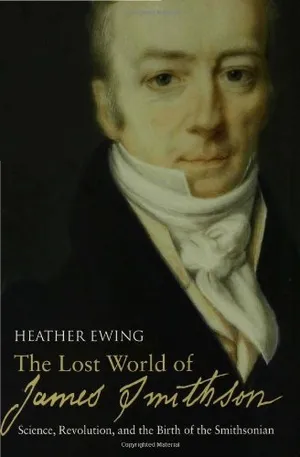Why This Wealthy British Scientist Saw So Much Potential in the United States of America
James Smithson’s biographer offers insight into ideals born of the Age of Enlightenment that gave rise to the founding of the Smithsonian
/https://tf-cmsv2-smithsonianmag-media.s3.amazonaws.com/filer/de/55/de55a1c6-a803-4bfc-8456-904528879616/smithsoncrop.jpg)
In many ways it is James Smithson's science that … proved the crucial key to his story. Chemistry was the cutting-edge field of Smithson's era, one that lay at the heart of the making of modern commercial society. Smithson's formative years unfolded in the midst of unprecedented discovery, much of it directly connected to chemical advances.
He was 18 when man broke the bounds of gravity and the Montgolfier brothers' balloon floated up over the heads of royalty, amazing thousands of spectators in the gardens of the Tuileries. Within the year Smithson was in a coach in the company of two aeronaut experts—Paolo Andreani, the first Italian balloonist, and the Frenchman Faujas de St. Fond, who penned the first book about the Montgolfiers—rumbling up to Scotland, on an expedition of geological discovery. In Edinburgh, he met and impressed James Hutton, who was on the verge of debuting his pioneering "theory of the earth," which would upend the biblical timeline. William Herschel was off discovering Uranus and distant galaxies with a telescope he built himself; Henry Cavendish, having identified myriad new gases within what was once known as the Aristotelian element of Air, was now leading the way to the discovery that Water was not an element either; and soon Humphry Davy's work exploring galvanism was to raise the idea that even the inanimate might be brought back to life.
Smithson's contemporaries were extending the boundaries of the known world, plumbing the earth, reaching for the heavens, expanding time, even entering the realm of the invisible.
These developments brought with them an unshakeable optimism for modernity. "The present, beyond all former times," as one of Smithson's friends said, "teem[s] with wonders." They also brought a belief that it was scientists who would dominate the hierarchy of the future.
The Lost World of James Smithson: Science, Revolution, and the Birth of the Smithsonian
In 1836 the United States government received a strange and unprecedented gift―a half-million dollar bequest to establish a foundation in Washington "for the increase and diffusion of knowledge among men." The Smithsonian Institution, as it would be called, eventually grew into the largest museum and research complex in the world. Yet the man behind what became "America's attic," James Smithson, has remained a shadowy figure for more than 150 years.
Many of the men leading the charge for modernity stood on the margins of society; in England they were the chemists and industrialists of the provinces, Protestant Dissenters for the most part, excluded from the Anglican and aristocratic Establishments. Science for them became the means of overthrowing the system as it existed, of replacing a corrupt order based on superstition and inherited privilege with one that rewarded talent and merit—a society that would bring prosperity and happiness to the many rather than the few.
Smithson's friends formed a virtual who's who of European science between the 1780s and the 1820s. Even as the world they inhabited was convulsed by war, they proclaimed themselves citizens of the globe and pledged allegiance first of all to truth and reason. Their highest aspiration was to be a benefactor of all mankind.
Where a majority of the English reacted with fear and repression to the political and social upheavals of the late eighteenth century, Smithson was part of a small elite who looked at the factories sprouting up across England's green hills and saw not dark satanic mills, but rather the glow of industry and improvement. In the French Revolution, they found not a threat to Britain's security, but triumphant confirmation that even the most hierarchical of societies could be transformed. And in America's unprecedented system of government, founded upon the rights of man, where each person was to be valued for his contribution rather than his pedigree, they saw the future—the most promising foundation for the pursuit of knowledge and the advancement of society.
America's cause, as Tom Paine had famously said, was "the cause of all mankind." In this light, Smithson's bequest of an "establishment for the increase and diffusion of knowledge among men," entrusted to the United States for its execution, shines from a new perspective.
The mapping of Smithson's world reveals the crucible that he passed through, and how profoundly affected he was by the culture of improvement in the late eighteenth century. Although it was 1846 before Congress passed the Act establishing the Smithsonian Institution, the ideals that gave rise to Smithson's gift were fashioned more than half a century earlier. It begins to seem as if inside Smithson the Smithsonian existed all along—a seed, germinating.
From Heather Ewing's The Lost World of James Smithson: Science, Revolution, and the Birth of the Smithsonian (Bloomsbury, 2007)
A Note to our Readers
Smithsonian magazine participates in affiliate link advertising programs. If you purchase an item through these links, we receive a commission.
